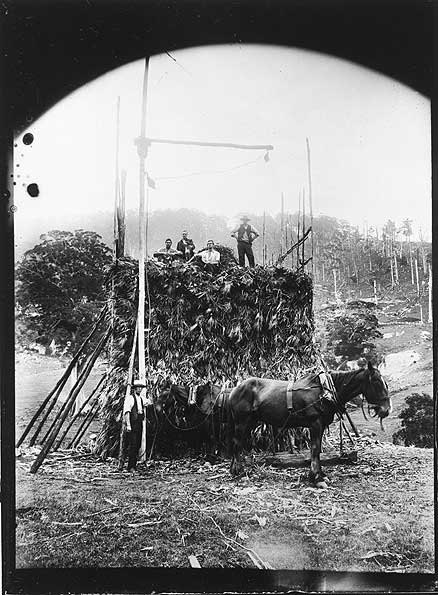 Maize silo stack, Hilltop, Tilba Tilba, c1895
Maize silo stack, Hilltop, Tilba Tilba, c1895
TLF ID R3951
This is a black-and-white photograph of a partially constructed maize silo stack in an open field. It shows five workers - four on top of the stack and one on the ground. Several horses are being used in the construction of the stack, which is at least two storeys high. The silo has an open rectangular wooden frame that is supported by diagonal braces. Lightly forested slopes can be seen in the background. The photograph was taken by William Henry Corkhill.
